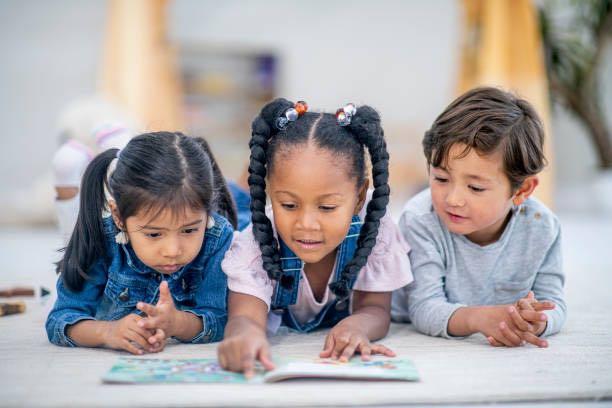Are you looking for Spanish expressions to teach your youngsters? Want to practice around the house in addition to the work you’re doing in your Spanish language classes or lessons?
Parents of my students often ask me how they can start speaking Spanish with their children at home. Whether they are parents who are studying Spanish themselves or if their children are learning. Either way, parents try to find a way to utilize Spanish in their homes. Most of the time, they’ll ask me for common Spanish expressions and phrases for the kids.
Whether you have studied Spanish at some point and are comfortable reading and pronouncing the language, or you are brand new to the Spanish language – practicing with your kids will have benefits.
Often, youngsters learning Spanish won’t have anyone else to speak Spanish to besides their instructor. By incorporating some Spanish phrases to your everyday lives will not only help you but your kid as well.
How to Incorporate Spanish Expressions into Daily Life…
When teaching kids Spanish, start small to maintain retention. Start with just three or four phrases. When you and the kids are comfortable using those expressions and are able to remember them consistently, add a few more of the common Spanish phrases to your daily routine.
It can be overwhelming not knowing where to start. It is recommended to choose a theme that interests you (talking about time, describing food, location, etc…) and learn the words that go with it. Learn some greetings to start with that you use in the morning.
Below is a list of common Spanish phrases that parents and children can incorporate into daily routines.
10 Spanish Expressions for Kids!
– Buenos días – Good morning
– ¡Hola!- hello!
– Es hora de comer – It’s time to eat.
– Por favor – Please
– Gracias – Thank you
– De nada – You’re welcome.
– Te quiero. – I love you.
– Bien hecho. – Good job.
– Sí – yes.
– No – No.
How to Get Kids Started & Prepared for Spanish Learning
Pick a certain time during the week (maybe dinner time on Thursday nights), where the whole family is specifically trying to practice what they’re learning. As you are talking or teaching these phrases to your child, translate the Spanish phrase into English immediately when you speak so that the child will start building the association between the two phrases.
If you are dealing with younger children from ages 3-7. I would encourage them to speak the same words on a daily basis rather than preparing for the once a week Spanish practice for the older children. It could mean saying please, thank you, and you’re welcome in Spanish, and using the food terms you know.
Working With Very Young Children
When working with children under 8 years old I would recommend in using props or visual flashcards. They will help in assisting you to teach Spanish and bring the lesson to life. You can use toys and what you have in your house to grab your child’s attention and excite their inner desire to play along.
Make it Physical and Fun!
On top of props, look into TPR, which stands for Total Physical Response. This is a method used by language teachers to help students understand new words by using physical movement. Parents do this automatically when teaching their babies to speak their native language, so this should come naturally for you when you learn Spanish with your youngster.
Be Consistent When Matching Movement With Language Concepts
While you are using your body to show the meaning of words have your child imitate the movement and the word or phrase. For example, you can rub your hands over your eyes in a sleepy motion when teaching the phrase Tengo sueño (I am tired). Have your child repeat it and use the same motion. Remember to be consistent with the movements for whichever words or phrases you’re teaching. Write them down.
Start Spanish Language Notebooks
An idea is to let your kids make notebooks where they store what they’re learning if they’re old enough. By using a composition notebook or three-ring binder to record new words and activities, helps to motivate each other and to teach them how to organize their notes.
Give Them a “Why”
Your kids need a compelling reason to learn a second language. As soon as they understand that it will increase interaction time with you, they will be extra motivated to engage. Another thing to consider is that when you teach Spanish to your child, keep in mind that it shouldn’t feel like homework or a chore. Show them that language can be fun.
Don’t wait to become fluent. Use what you know. Take Spanish lessons to help your family improve. Make mistakes together. Have fun! The best way to become conversational or fluent is by learning together.
Happy Learning!
Rosita Ruiz

